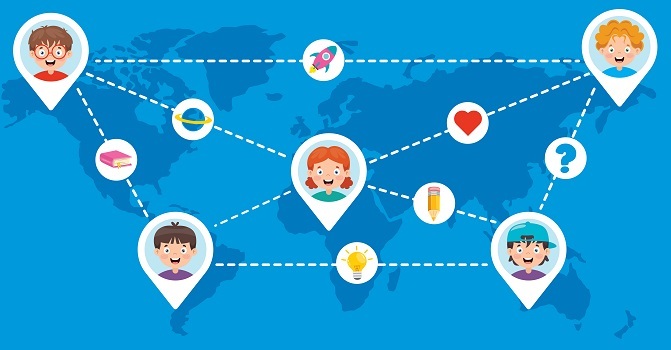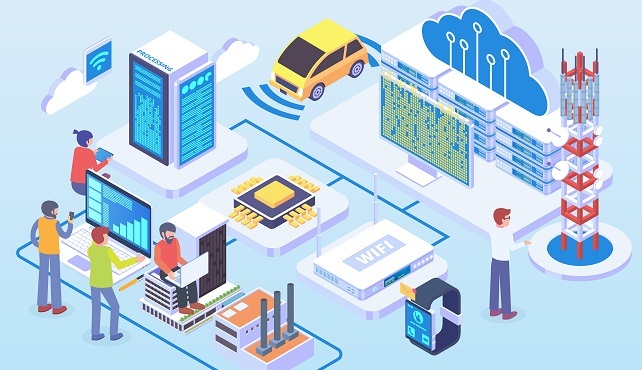
 Data Structure
Data Structure Networking
Networking RDBMS
RDBMS Operating System
Operating System Java
Java MS Excel
MS Excel iOS
iOS HTML
HTML CSS
CSS Android
Android Python
Python C Programming
C Programming C++
C++ C#
C# MongoDB
MongoDB MySQL
MySQL Javascript
Javascript PHP
PHPPhysics
Chemistry
Biology
Mathematics
English
Economics
Psychology
Social Studies
Fashion Studies
Legal Studies
- Selected Reading
- UPSC IAS Exams Notes
- Developer's Best Practices
- Questions and Answers
- Effective Resume Writing
- HR Interview Questions
- Computer Glossary
- Who is Who
What is the full form of EDGE?
Technology
EDGE (Enhanced Data Rates for GSM Evolution) is a 2.5G mobile communication technology that is an improvement over its predecessor, GPRS. With data transfer rates of up to 384 kbps, it enables faster transmission of data, which is especially useful for data-intensive applications such as video streaming or online gaming. One of the key factors behind its increased speed is its use of a different modulation scheme than GPRS.

EDGE uses an advanced modulation scheme called 8PSK (8 Phase Shift Keying), which enables it to send more data per radio frequency channel. This modulation scheme provides more efficient use of the available frequency spectrum, which helps to increase the spectral efficiency of EDGE. By using 8PSK, EDGE can transmit three bits of data per symbol, compared to one bit per symbol in GPRS, making it much faster.
The higher spectral efficiency of EDGE also means that it can support more users simultaneously on the same network infrastructure as GSM, making it a cost-effective solution for mobile operators. Despite not being as fast as 3G or 4G technologies, EDGE remains a useful technology in areas with limited network coverage, where it provides a good user experience for data-intensive applications.
Network
EDGE technology is designed to operate on the same network infrastructure as GSM, utilizing the same radio frequency bands as GSM networks. This means that EDGE can be deployed on existing GSM networks without significant upgrades, which makes it a cost-effective solution for mobile operators who want to offer faster data transfer rates to their customers.
To deploy EDGE, mobile operators need to upgrade their network equipment, including base stations and mobile switching centers, to support the new modulation scheme used by EDGE. This upgrade requires less investment compared to building a new network from scratch, making it a more viable option for many mobile operators. The upgrade also provides backward compatibility with GSM, meaning that EDGE-enabled devices can still operate on GSM networks, ensuring continued service for older devices.
Moreover, EDGE's ability to operate on existing GSM networks also means that it can offer wider coverage than 3G or 4G technologies. Since 2G networks have been widely deployed, EDGE can provide coverage in areas where 3G or 4G networks are not available, making it a critical technology in many parts of the world.
Speed
EDGE technology offers data transfer rates of up to 384 kbps, which is considerably faster than GPRS. However, the actual speed of data transfer on EDGE networks is dependent on various factors such as network coverage, signal strength, and device capabilities. In practice, the data transfer rates of EDGE can vary from 100 kbps to 384 kbps. The data transfer rate of EDGE can also be affected by the number of users on the network at a given time. When there are more users on the network, the available bandwidth is shared, and the data transfer rate for individual users can decrease. This is known as network congestion, and it is a common issue in areas with high population density.

Despite not being as fast as 3G or 4G technologies, EDGE still provides a decent user experience for many data-intensive applications. Email, web browsing, and social media applications typically require lower bandwidth compared to video streaming or online gaming, making EDGE suitable for such applications. The network coverage of EDGE is also wider than 3G or 4G technologies, which makes it a useful technology in rural areas and places with limited network coverage.
Evolution
EDGE is a transitional technology that bridges the gap between 2G and 3G mobile communication technologies. It was introduced in the early 2000s when 3G technology was not widely available. EDGE was designed to provide faster data transfer rates than GPRS and to offer a smooth transition to 3G technology. In some countries, EDGE was the first mobile communication technology to offer mobile internet access.
Since the introduction of EDGE, mobile communication technologies have evolved rapidly. 3G technology was introduced in the mid-2000s, followed by 4G technology in the 2010s. Today, 5G technology is being rolled out in many countries. However, EDGE still has a role to play in mobile communication. It is still widely used in many countries, especially in areas where 3G or 4G network coverage is limited. In some countries, EDGE is the only mobile communication technology that is available in rural areas.
Conclusion
EDGE technology uses a different modulation scheme called 8PSK (8 Phase Shift Keying), which enables it to transfer more data per time slot compared to GPRS. Additionally, EDGE can operate on the same network infrastructure as GSM, which makes it a cost-effective solution for mobile operators.
With data transfer rates of up to 384 kbps, EDGE provides faster speeds than GPRS and is considered a transitional technology that bridges the gap between 2G and 3G mobile communication technologies. While not as fast as 3G or 4G technologies, EDGE still offers a good user experience for many data-intensive applications such as email and web browsing.
Due to its wider network coverage and lower cost compared to 3G or 4G technologies, EDGE continues to play a significant role in mobile communication, particularly in areas where 3G or 4G network coverage is limited.
FAQs
Q1. What is EDGE technology?
Ans: EDGE Full Form (Enhanced Data Rates for GSM Evolution) is a 2.5G mobile communication technology that offers faster data transfer rates than its predecessor, GPRS.
Q2. How does EDGE technology offer faster data transfer rates?
Ans: EDGE uses a different modulation scheme than GPRS called 8PSK (8 Phase Shift Keying), which enables it to send more data per radio frequency channel, increasing the spectral efficiency of EDGE.
Q3. What is the role of EDGE in mobile communication today?
Ans: EDGE still has a role to play in mobile communication, especially in areas where 3G or 4G network coverage is limited. It is still widely used in many countries, especially in rural areas where it may be the only mobile communication technology available.

